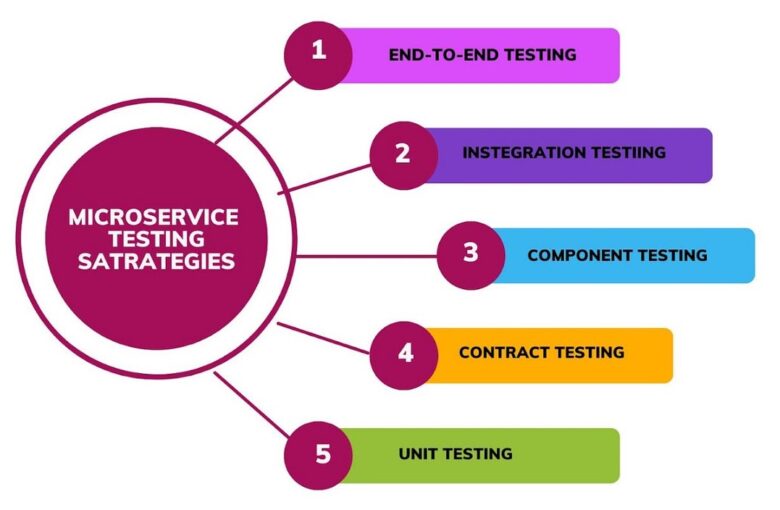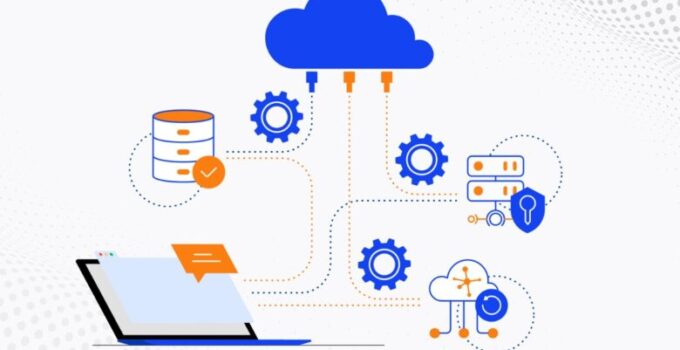Microservices architecture has gained immense popularity in the software development industry due to its scalability, flexibility, and ability to deliver applications faster. However, testing microservices presents unique challenges, particularly in performance testing services.
This article examines organizations’ performance testing challenges when adopting a microservices architecture and provides practical strategies to overcome them. It discusses the testing approach, different types, and helpful strategies for performance testing of microservices.
Additionally, it offers valuable tips for ensuring efficient performance testing services. Lastly, it covers deploying and testing microservices with AlphaBOLD, providing insights into its expertise in performance testing services.
Introduction
Comprehensive performance testing becomes crucial as organizations break down large applications into micro and independent services. Performance testing ensures that microservices can handle the expected workload, respond within acceptable time limits, and maintain system stability under stress.
Microservices architecture is an architectural style that structures an application as a collection of loosely coupled, independently deployable services. Each service focuses on a specific business capability and communicates with other services through well-defined APIs. This approach enables organizations to develop, deploy, and scale applications more efficiently.
Performance testing is vital in microservices to identify potential bottlenecks, optimize resource allocation, and ensure a positive user experience. It helps determine the system’s behavior under different loads and conditions, uncover performance issues, and validate the scalability of individual microservices.
Microservices Performance Testing Challenges

Source: aqua-cloud.io
Service Interdependencies
One of the foremost performance testing services challenges is that microservices often rely on inter-service communication, making isolating and testing individual services in real-world scenarios challenging. Changes in one microservice can impact the performance of others, and identifying the root cause of performance issues becomes complex.
Scalability and Resource Allocation
Microservices architecture allows for horizontal scaling, where multiple service instances can be created to handle increased demand. However, effectively allocating resources and distributing the workload across services requires careful consideration and thorough performance testing.
Data Management and Consistency
Microservices work with distributed data, and ensuring data consistency across services is crucial. Performance testing should include scenarios that stress the data management capabilities of microservices, including data retrieval, updates, and consistency across multiple services.
Monitoring and Observability
One of the other significant performance testing challenges is due to the decentralized nature of microservices, as monitoring and observability become critical for detecting performance issues.
Establishing effective monitoring mechanisms and leveraging observability tools can help identify performance bottlenecks and improve overall system performance.
Microservices Testing Approach
In the context of microservices, test automation encompasses various levels of testing to ensure the overall quality and reliability of the application. The critical testing stages include unit tests, integration tests between microservices, and end-to-end tests in an entire microservices environment. Let us discuss each of these test types and explore their significance.
Microservices Test Types

Source: blog.bitsrc.io
Microservices testing involves multiple levels of testing, each serving a specific purpose in the software development lifecycle. The following are the key microservices test types:
Microservices Unit Test
Microservices unit test focuses on verifying the functionality of individual microservices in isolation. It ensures that each microservice performs as expected and meets the defined requirements. Developers typically write unit tests and cover specific scenarios, including positive and negative cases.
Microservices Component Test
Microservices component test involves testing individual components within a microservice, such as APIs, databases, and external services. It aims to verify the behavior and functionality of each element independently. Component tests can be automated to ensure consistent and reliable results.
Microservices Integration Test
Microservices integration test between microservices is crucial to validate the interactions and compatibility between different microservices within an application. It ensures the integrated system functions seamlessly, and data flows correctly between microservices. Integration tests help identify potential issues early in the development process.
Microservices Contract Test
Microservices contract test focuses on verifying the contracts between microservices. It ensures that a microservice’s expected inputs and outputs align with what others expect. Contract testing helps detect compatibility issues between microservices and provides seamless communication.
Microservices End-to-End Test
Microservices end-to-end test involves validating the entire microservices architecture as a whole. It tests the system’s interactions, data flow, and behavior across multiple microservices. End-to-end tests simulate real-world scenarios to ensure that the microservices work together harmoniously and deliver the expected functionality.
Microservices Performance Testing Strategies

Source: devops.com
To effectively test microservices-based applications, various strategies can be employed. Here are some popular methods:
Full Stack in a Box Strategy
The “Full Stack in a Box” strategy involves running the entire microservices stack in a local or dedicated environment. This approach allows comprehensive testing of the complete system in an isolated setting, ensuring accurate and reliable results.
Shared Test Instances Strategy
The shared test instances strategy involves reusing test environments across different microservices. This strategy helps reduce resource consumption and allows for efficient testing of multiple microservices simultaneously. However, care must be taken to avoid interference or conflicts between the microservices being tested.
Stubbed Services Strategy
The stubbed services strategy involves replacing specific microservices with stubs or simulated services during testing. This approach allows for isolated testing of specific microservices without dependencies on external systems.
Stubbed services enable faster test execution and facilitate targeted testing of individual microservices.
Black Box and White Box Testing Strategy
Black box testing treats microservices as isolated components without considering their internal implementation details. It focuses on validating the expected inputs and outputs. In contrast, white box testing considers microservices’ internal structure and implementation.
It involves inspecting the code and conducting tests based on the internal logic and data flow.
Best Practices for Effective Testing of Microservices

Source: kruschecompany.com
To ensure effective microservices testing, consider the following best practices:
Understand Services
Understand the microservices architecture and their specific functionalities. Identify the critical services and prioritize their testing based on business requirements and dependencies.
Validate Links
Validate the links and dependencies between microservices. Test data flow and communication protocols and ensure seamless integration between microservices.
Create Separate Test Environments
Create separate testing environments that mirror the production environment as closely as possible. This helps identify issues that may arise due to differences in settings and ensures a smooth transition to production.
Establish Well-defined Test Setups
Establish clear and well-defined test setups. This includes test data preparation, mocking or stubbing external dependencies, and configuring test environments. Well-structured setups contribute to consistent and repeatable test results.
Implement Comprehensive Testing Strategies
Implement comprehensive testing strategies, combining different levels of testing, such as unit, integration, component, contract, and end-to-end testing. Use appropriate testing frameworks and tools to automate tests wherever possible. Regularly analyze test results and refine the testing process based on the feedback received.
Microservices Deployment and Testing with AlphaBOLD

Source: youtube.com
AlphaBOLD is an experienced performance testing company specializing in microservices deployment and testing. Its services evaluate module and service performance for specific applications, considering scalability needs, non-functional system requirements, architecture, and user load patterns.
AlphaBOLD aims to improve continuous delivery and deployment by eliminating manual testing and offers comprehensive detection, assessment, and quality assurance services and solutions.
Its expertise in microservices architecture, utilization of various tools and techniques, and successful track record makes it a valuable choice. Its services include load testing, stress testing, soak testing, spike testing, and scalability testing, ensuring your microservices can handle user loads, extreme conditions, long durations, sudden spikes, and business growth.
AlphaBOLD is a reliable microservices deployment and testing partner, ensuring optimal performance.
Conclusion
Performance testing in the context of microservices architecture is essential to ensure optimal system performance and user satisfaction as it ensures that the services can handle workloads, respond quickly, and maintain system stability.
However, there are performance testing challenges in testing microservices due to service interdependencies, scalability, data management, and monitoring.
Different test types, such as unit testing, integration testing, and end-to-end testing, help address these performance testing challenges. Strategies like “Full Stack in a Box,” shared test instances, and stubbed services are used for practical testing.
Understanding the architecture, validating links, creating separate environments, and implementing comprehensive testing strategies are critical. AlphaBOLD is a reliable company specializing in performance testing services, offering services like load testing and scalability testing to ensure optimal performance.




